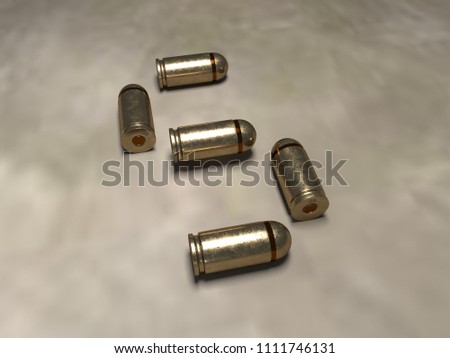How Is Crack Cocaine Made
Do you wonder what cocaine and crack cocaine look like? Little stuart 3 full movie in hindi free download. You may have seen these drugs depicted many times in film and television and wonder if you'd recognize them if you came across them. Here are photographs from the U.S. Drug Enforcement Administration (DEA) of cocaine and crack cocaine in various forms and stages, from small street-level amounts to shiploads.
Coca Leaves
Cocaine, a strong stimulant that affects the body's central nervous system, is extracted from the leaves of the South American coca plant. People in South America have used the leaves for tea or chewed them for a mild stimulant effect, much like coffee, for thousands of years. This photo shows the coca leaves from which cocaine is manufactured, along with purified forms of the drug.
7 days ago - [8] The better the coke, the better the crack. Making crack is also a good way of assaying the quality of your blow, especially if you're uncertain. Crack cocaine is made by dissolving powdered cocaine in a mixture of water and baking soda (sodium bicarbonate) or ammonia. This mixture is boiled, dried, and broken into rock-like chunks. The original cocaine comes from a paste made from the leaves of the South American coca plant.
Raw Cocaine
Once cocaine is extracted from the coca leaves, it's produced by further extractions and can be seen in flake and rock forms before it's purified into a fine white powder. This is a closeup photo of raw cocaine before it's crushed to be snorted or liquefied to be injected.

Powdered Cocaine
A common form of cocaine is a white crystalline powder. This powder is often mixed with sugar, cornstarch, vitamins, or flour. After the raw cocaine is produced, it's cut with these substances, often each time it changes hands along the illicit supply chain.
The final potency of cocaine bought on the street, as well as the sorts of substances it's mixed with, is impossible to predict.
Bagged Cocaine
Cocaine is the second most commonly used illegal drug in the United States (marijuana is the first), but it's the fourth most commonly used illicit drug overall, coming in after prescription painkillers and prescription tranquilizers.
An estimated 0.7 percent of Americans, or 1.9 million people aged 12 or older, were using cocaine in 2016, according to the National Survey on Drug Use and Health (NSDUH).
Cocaine is commonly transported in plastic bags or condoms. This photo is of a large quantity of cocaine wrapped in plastic and ready to be used or sold.
Baggies of Cocaine
This photo shows how cocaine usually appears as it's sold by street dealers, in small plastic bags. The tiny size allows them to be easily passed in a short encounter, with an amount of the drug that the customer can afford to purchase. If you see these sort of packets being exchanged or see discarded packets, it's entirely possible that they contain cocaine or other illicit drugs.
Cocaine Bricks
As cocaine is being smuggled into the United States or transported from one region to another, it's usually in the form of 'bricks' that weigh about one kilogram, or 2.2 pounds, each. These bricks, wrapped in paper showing a scorpion logo, were seized by the DEA.
Crack Cocaine Chips
Crack cocaine, which became popular in the 1980s, looks like a small rock, chunk, or chip and it's sometimes off-white or pink in color. While it's the same drug as cocaine with virtually the same effects, it can be smoked, which gives the user an immediate high.

Crack Cocaine Bags
These are typical baggies of crack cocaine as they're sold by street dealers. The rocks are placed in a pipe and smoked. Like powdered cocaine, crack cocaine might be cut or diluted with other substances like ammonia or baking soda.
Off-White Crack Cocaine Rocks
Like regular cocaine, crack creates a strong sense of exhilaration. Users generally feel invincible, carefree, alert, euphoric, and have a lot of energy.
After crack cocaine is cooked down from powdered cocaine, it can sometimes appear to have a pink color like these rocks. It's known as 'crack' because of the crackling sound it makes when it's smoked.
Smuggled Cocaine
Because cocaine is usually shipped in bulk, it's difficult to conceal, like these bricks that were confiscated by the U.S. Drug Enforcement Administration. This is 9,291 kilograms of cocaine, over 10 tons, seized aboard a ship by the DEA.
Cocaine
Cocaine is potent and both the short-term and long-term health effects of cocaine are dangerous to your physical and mental health. The risk of having seizures, a stroke, going into cardiac arrest followed by respiratory failure, and even sudden death is equal whether you use cocaine once, on occasion, or you're a habitual user.
Using cocaine even once can also lead to addiction. The more you use it, the more your body gets used to it, creating the need for a bigger dose and/or using the drug more often in order to get the same effect.
If you or someone you love has a dependence on cocaine, treatment can help. SAMHSA has an online treatment locator that shows you where local treatment centers are, or you can call SAMHSA's National Helpline for a referral 24 hours a day, seven days a week, 365 days a year, at 1-800-662-HELP (4357).
Article SourcesNational Institute on Drug Abuse. Cocaine. National Institutes of Health. Updated May 2016. https://www.drugabuse.gov/publications/research-reports/cocaine/what-cocaine
Cleveland Clinic. Cocaine (Crack). https://my.clevelandclinic.org/health/drugs/4038-cocaine-crack
Ahrnsbrak R, Bose J, Hedden SL, Lipari RN, Park-Lee E. Key Substance Use and Mental Health Indicators in the United States: Results from the 2016 National Survey on Drug Use and Health. Substance Abuse and Mental Health Services Administration (SAMHSA). U.S. Department of Health and Human Services. Center for Behavioral Health Statistics and Quality. Published 2017. https://www.samhsa.gov/data/report/key-substance-use-and-mental-health-indicators-united-states-results-2016-national-survey
